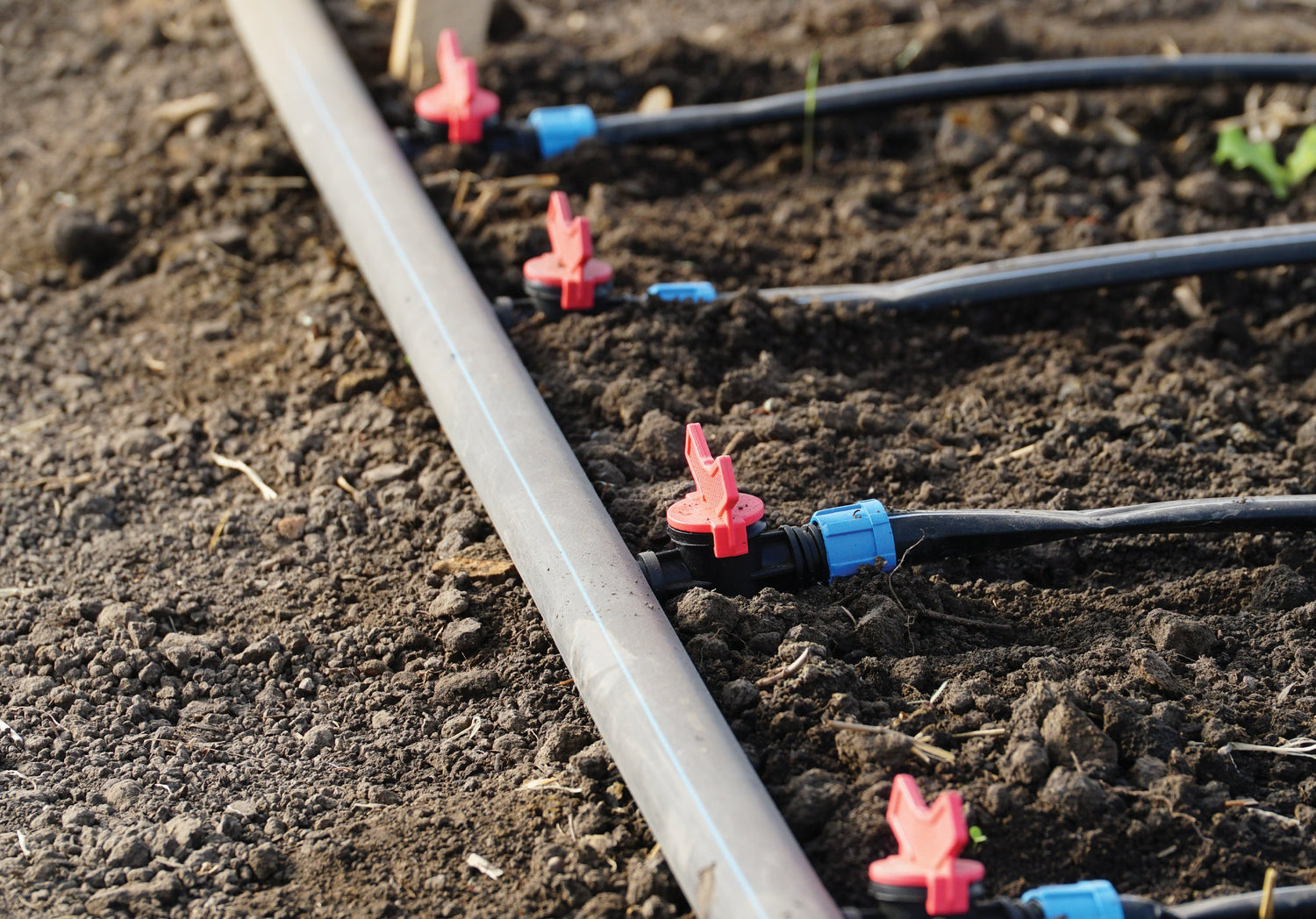Water sample collection
Just like soil sampling, irrigation water sampling is crucial for identifying waterborne issues such as salinity, carbonate and bicarbonate hazards, and chloride injuries. To ensure accurate results, the sample container must be clean and free from contamination. When collecting water from an open well, immerse a plastic bucket at a depth of 4 to 5 feet below the surface. For borewell water sampling, allow the water to run for 20 minutes before collecting it in a clean container.
Drip irrigation in coconut
The root zone of a coconut tree, which is crucial for moisture absorption, is primarily concentrated in a circular area with a radius of 200 cm around the tree's base and extends up to a depth of 100 cm. To effectively irrigate coconut trees, you can use a set of four drippers placed equidistantly in a circle, 100 cm away from the tree's base. These drippers should discharge water at a rate of 30 liters per hour for 2.5 hours, with an irrigation frequency of every 8 days. This method helps maximize the wetting area of the soil within the coconut tree's effective root zone.
 Drought management and soil moisture conservation
Drought management and soil moisture conservation
a. Mulching with coconut husks/leaves/coir pith
During the hot summer months, place 100 coconut husks with the curved side facing up, or use 15 dried coconut leaves, or spread coir pith up to 10 cm thick in a 1.8-meter radius around each palm. This helps retain soil moisture effectively.
b. Burial of coconut husk or coir pith
To combat drought and prevent coconut button shedding, bury 100 coconut husks with the curved side facing up, or use 25 kg of coir pith per palm. Dig circular trenches 30 cm wide and 60 cm deep, extending 1.5 meters from the palm. Alternatively, bury husks in trenches 45 cm deep and 150 cm wide, spaced 3 meters apart between coconut rows. This method ensures that husks or coir pith retain moisture from monsoon rains effectively.
Here are some key water conservation activities:
- Borewells/Open Wells: These provide access to groundwater for irrigation. Proper well design, construction, and maintenance are essential for sustainable water extraction. Regular monitoring of water levels is also important.
- Groundwater Recharge: This involves replenishing groundwater supplies through various methods:
- Rainwater Harvesting: Collecting rainwater from rooftops, paved areas, and open fields and directing it to recharge structures like percolation ponds, recharge wells, and check dams.
- Contour Bunding: Constructing earthen bunds along the contours of the land to slow down runoff and allow water to infiltrate into the soil.
- Trenching: Digging trenches across the slope of the land to intercept runoff and promote infiltration.
- Trench-cum-Bund (TCB): This is a combined approach where trenches are dug along the contours, and the excavated soil is used to create bunds on the downhill side. TCBs effectively conserve soil moisture and prevent soil erosion.
